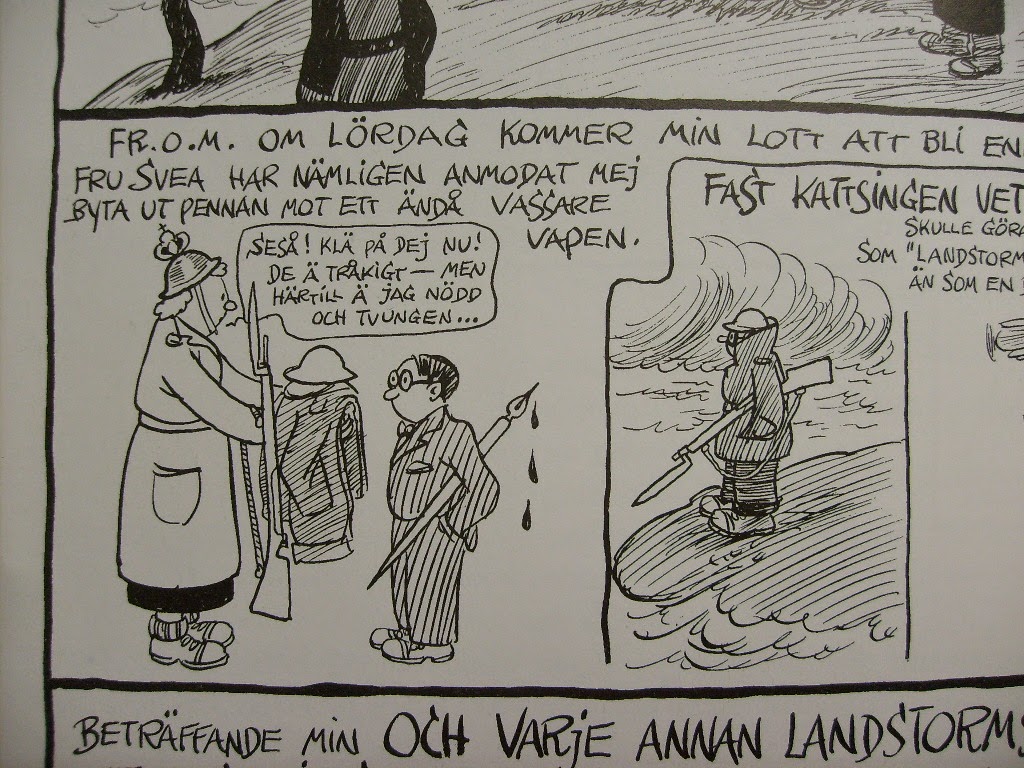| From Wikipedia. |
"Kallocain", from 1940, is probably her best known work internationally, and can be viewed as a precursor to Orwell´s "1984", which was published about a decade later. The narrator of the novel is Leo Kall, inventor of the truth-drug Kallocain. He is a citizen of the World-state, lives in Chemistry City Number 4, which is more or less an underground factory, with his wife Linda and their two youngest children. Their oldest, at eight years old, has already been moved into a reformatory of sorts, where all children go to be shaped into good "fellow-soldiers". The World-state is a severely supervised society, where every home has an "eye" and an "ear" on the wall, behind which supervisors may at any time look in on family life (such as it is: most of their spare time, family members are assigned some kind of policing/supervising duty), and informing on anyone, even family members, not seemingly devoted to the state, is a proud duty, not a dirty secret.
Leo Kall is a fanatic, but about to crack. His supervisor is Edo Rissen, an introverted, thoughtful man and Kall projects all his insecurities on him; he even imagines that Rissen has an affair with Linda. As they start to test the Kallocain drug, Rissen sceptically says that every man over 40 has a guilty conscience, which Kall takes as admission of crimes against the state. The confessions they get from their volunteers are not about crimes as such, but rather "emotional infidelity" to the state, a disturbing longing for human affection and trust, a natural faith in one´s fellow. The police authorities order Kall and Rissen to start training Kallocain interrogators, but it turns out that now, anyone can be convicted. As is Rissen, when Kall finally turns him in. He also steals some of the drug and uses it on his wife, with surprising results.
I found it a captivating read, and fast, at only 130 or so pages. I got quite spooked for a while, as I think anyone with some degree of maturity - as Rissen says, with reasons for a guilty conscience - will recognize that state of awakening from truths earlier taken for granted. I think most teenagers feel what Kall does, as they realize that all families and societies are not alikel, but that there are several ways of doing things and looking at the world, not necessarily on a scale from good to bad, just different. I suspect being a lesbian at the beginning of the century, coming from a middle-class family, would have given Boye a profound insight into being at odds with ideas of what is normal and natural.
You can read "Kallocain" for free on-line, at the University of Wisconsin digital collections, but it is also available through amazon, as is her "Complete Poems". Her most famous poem goes "Javisst gör det ont när knoppar brister, varför skulle annars våren tveka?" (= of course it hurts when buds burst, otherwise, why would spring hesitate? the entire poem can be read in English here) and I think most Swedes with an interest in literature recognize it, even if they are not poetry readers; references abound. The Karin Boye Society even have short recordings of her voice, reading her own poems. (Although, for them to work I had to download them first, could be my browser acting funnily.) She has that very clear enounciation they had in those days.
All in all, a good read. I am quite keen on reading more of her in the future.
























































